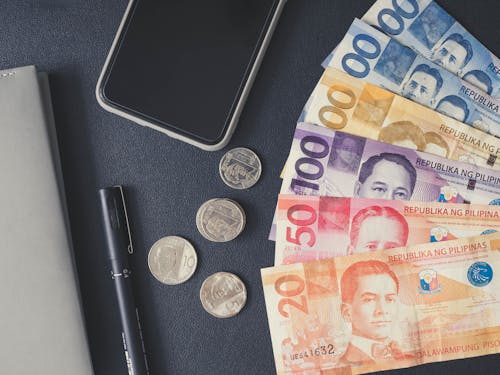Remittances sent home by overseas Filipino workers have a variety of effects on foreign investment in the Philippines. One of the most important effects is that they give the nation a consistent flow of funds for investment possibilities. More money is now available for investment in a variety of industries, including manufacturing, services, and real estate, thanks to the growth in remittances. These investments have the potential to increase the economy, open up new job opportunities, and advance national development. We will see on this article how remittance affect investing in your home country.
Remittances in particular have a big influence on the Philippine real estate market. Remittance funds from overseas workers have increased housing demand, which has stimulated the creation of inexpensive housing developments all around the nation.
For OFWs looking to spend their hard-earned cash in a safe and dependable asset, the real estate market has grown to be a desirable investment choice. The expansion of the construction sector as a result of the rise in real estate demand has given many Filipinos employment prospects.
The stock market is another industry that gains from remittances sent home by OFWs. Financial mechanisms such mutual funds, exchange-traded funds, or direct stock ownership are available for OFWs who are more knowledgeable about the stock market to invest in the Philippine stock exchange. The infusion of investment capital may encourage the country’s stock market to expand and draw more domestic and international investors.
Remittances have the potential to lift up developing economies

Remittances indeed have the power to strengthen poor nations’ economy. For many poor nations, like the Philippines, remittances constitute a significant source of revenue. In actuality, remittances account for a sizable amount of the nation’s Economy (GDP). The Bangko Sentral ng Philippines estimates that in 2020, remittances from overseas Filipino workers (OFWs) hit a record high of $33.8 billion, or 9.8% of the nation’s GDP.
There are various ways that remittances might boost the economic expansion of underdeveloped nations. First and foremost, they give families a reliable source of money that can be used to pay for necessities like food, shelter, and education. This can raise household standards of living and lower poverty.
Second, remittances may benefit small firms and entrepreneurs, which in turn can boost employment creation and economic development. Remittances can be used, for instance, to launch or grow a small business or to finance training or education that would improve job prospects.
Remittances can also assist in enhancing the balance of payments of poor nations. Remittances from OFWs to their home countries are effectively labor exports, which can help a nation earn foreign currency and lessen its reliance on external borrowing.
In general, remittances may be a significant factor in helping developing nations’ economies grow. Governments and other stakeholders must, however, make sure that remittance flows are efficiently directed into profitable ventures that can provide long-term economic growth and eradicate poverty.
What Is an Example of a Remittance?

Remittance is the act of sending money from one location to another, usually from a foreign worker’s home country to their own. Millions of Filipinos labor overseas and send money to support their family members, making the Philippines one of the top beneficiaries of remittances in the world. We’ll talk about a remittance case from the Philippines in this article.
Let’s take a look at Pedro’s situation, a nurse employed in the US. He remits money to his family in the Philippines each month to assist with their living needs. Pedro uses a remittance service company, such as Western Union, MoneyGram, or Remitly, to transmit the money. It is simple for people like Juan to send money home because these businesses, who specialize in money transfers and have offices across the world, make it possible.
The service provider charges Pedro a fee each time he sends a remittance. The cost varies according on how much money is sent, the nation it is going to, and the method of delivery. Remittances can be received in the Philippines in a variety of methods, including bank deposits, cash pick-ups, and mobile wallets. Pedro’s family chooses cash pickup at a remittance center because they would rather receive the money in cash. They will want proof of identity and a tracking number, which Juan will give them when he transmits the funds.
Pedro’s family can utilize the funds to pay their bills as soon as the remittance is received. They may use it, for instance, to cover the costs of their home, food, utilities, and education. For many families in the Philippines, especially those who reside in rural regions or have few employment options, remittances are a vital source of income. The Bangko Sentral ng Pilipinas (BSP) estimates that in 2020, remittances from Filipinos living abroad were $29.9 billion, or about 9.2% of the nation’s GDP. (BSP, 2021). This injection of foreign money can support efforts to combat poverty while boosting the economy.
Remittances to the Philippines are not without difficulty, though. One problem is the high cost of transferring money, which can be difficult for families with little resources. The World Bank estimates that the average cost of remittances to the Philippines is 4.9%, which is little less than the 6.5% average cost worldwide. (World Bank, 2020). For many families that depend on remittances for their daily necessities, this still constitutes a considerable expense.
The beneficiaries of remittances’ lack of financial knowledge is another problem. Many Filipinos who receive remittances lack a bank account or have little knowledge of financial services and products. Their ability to save, invest, or obtain credit may be hampered as a result, which may reduce their chances of achieving financial stability.
Remittances are a substantial source of income for millions of Filipinos, and they have a big impact on the economy of the nation. Remittances do present certain difficulties, though, such as excessive expenses and financial illiteracy. Policymakers and financial institutions should aim to increase the affordability, accessibility, and inclusion of remittance services as well as to encourage financial literacy and inclusion among remittance receivers in order to solve these issues. By doing this, remittances can continue to be an essential instrument for the Philippines’ economic growth and the alleviation of poverty.
How Much Does a Remittance Cost?

The amount being transferred, the method of transfer, and the service provider are just a few variables that might affect how much remittance costs in the Philippines. Remittance costs in the Philippines often run between 1% and 5% of the total amount transferred.
Depending on the bank and the transfer amount, the transaction costs for sending money through a bank might range from PHP 150 to PHP 500 each transaction. For payments made through their online platforms, several banks provide reduced or even no costs.
Depending on the amount being sent and the service provider, the costs for utilizing a money transfer service might range from PHP 50 to PHP 500 or more. Western Union, MoneyGram, and Xoom are a few of the most well-liked money transfer services in the Philippines.
When transferring money, it’s a good idea to research the costs and exchange rates offered by several service providers to be sure you are receiving the best deal. In order to reduce fees and receive transfers more quickly, think about using mobile applications and internet platforms.
Which Countries Receive the Most Remittances?
Remittances, or the transfer of funds from people who live and work abroad to their home countries, are a significant source of revenue for many developing nations. Remittances hit a new high of $689 billion in 2018, the World Bank reports, with India, China, Mexico, and the Philippines being the leading recipients.
India
The World Bank estimates that India will receive around $83 billion in remittances in 2019. India has a substantial diaspora, with millions of people residing and working in countries including the United States, the United Kingdom, and the United Arab Emirates. With the money sent back home, families are helped, businesses are bought, and India’s economy is strengthened.
China
With an expected $68 billion in remittances in 2019, China is the second-largest receiving country. China receives the majority of its remittances from Chinese workers in Australia, Canada, and the United States. The funds are frequently utilized to finance family needs, educational expenses, and real estate or company investments.
Mexico
With an expected $38 billion in remittances in 2019, Mexico is the third-largest recipient country. Millions of Mexican migrants reside and work in the United States, where the majority of remittances to Mexico come from. The funds are frequently used to invest in enterprises, assist families, and pay for healthcare and education.
Philippines
The Philippines received an estimated $35 billion in remittances in 2019, making it the fourth-largest recipient country. Similar to India, the Philippines has a sizable diaspora, with millions of Filipinos employed overseas in nations like the US, Saudi Arabia, and the UAE. The money returned back to the Philippines is invested in enterprises, used to assist families, and paid for healthcare and education.
Other countries like Egypt, Pakistan, Bangladesh, and Nigeria are other nations that benefit significantly from remittances. Remittances frequently make up a sizeable amount of the GDP of these nations and are extremely important for eradicating poverty and fostering economic growth.
Remittances are a substantial source of income for millions of Filipinos, and they have a big impact on the economy of the nation. Remittances do present certain difficulties, though, such as excessive expenses and financial illiteracy. Policymakers and financial institutions should aim to increase the affordability, accessibility, and inclusion of remittance services as well as to encourage financial literacy and inclusion among remittance receivers in order to solve these issues. By doing this, remittances can continue to be an essential instrument for the Philippines’ economic growth and the alleviation of poverty.
Micro-level impacts (individual and households)
Remittances may have both beneficial and negative effects on people and households. The impact of remittances can help households, particularly those in low-income and vulnerable areas, by giving them financial support. Remittances can be used to pay for everyday needs, for healthcare and education, as well as for small company investments and house renovations. Remittance-receiving households often have greater income and consumption levels than non-remittance-receiving households, which can contribute to the reduction of poverty and inequality.
Moreover, remittances may have social and psychological effects. Remittances can provide migrant workers a feeling of fulfillment and purpose on their human development since they enable them to support their family and give back to the areas they come from. Remittances can improve family relationships and provide recipients a sense of security by letting them know that their loved ones are being taken care of.
Remittances have the potential to harm local economies and breed dependency. Remittances may occasionally be used to support consumption rather than investment, which might impede long-term economic development and growth. Moreover, remittances may persuade young people to leave their home nations in search of employment rather than pursuing school or other options, which would result in a brain drain and a lack of skilled labor.
Macro-level impacts (country-level)
Remittances may significantly affect a nation’s economy and degree of development on a macro level. Remittances have a favorable impact on economic growth and development since they provide as a significant source of foreign currency and investment funding. Remittances tend to go to the most vulnerable and underprivileged parts of the population, therefore they can aid in reducing poverty and fostering inclusive economic growth.
The macro-level social and political effects of remittances are also possible. Remittances, for instance, help lessen social discontent and wealth inequality since they provide as a safety net for homes during bad times. While they foster inter-regional and global relationships and knowledge, remittances can help strengthen social cohesiveness and contribute to peacebuilding.
Remittances can, however, also have detrimental macroeconomic effects, such as boosting inflation and exchange rate volatility, encouraging reliance, and thwarting long-term economic progress. Remittances may also provide difficulties for macroeconomic management since they can be tricky to trace, quantify precisely, and aren’t always included in official data.
Remittances affect people, homes, and whole nations on both a micro and a macro level, in conclusion. When developing policies and programs to promote the positive impacts of remittances, such as supporting financial inclusion and sustainable development, and mitigate the negative impacts, such as reducing dependency and inequality, policymakers and stakeholders should take these impacts into account.
Some more contentious impacts of remittances
With millions of Filipinos working abroad and remitting money to their family member, remittances are a key source of income for many Filipino families. Remittances have a number of beneficial effects on households both positive impact and negative impact, such as raising living standards and promoting economic growth, but they also have some more divisive effects on the Philippines. Some of these effects will be covered in this article.
The potential for remittances to encourage reliance and spending is one of the controversial effects of these payments. Remittances, according to some experts, can foster a culture of dependency among recipient families because they encourage people to rely on the money given by their relatives overseas rather than look for work or launch enterprises to reduce poverty. This may lead to a decline in productivity and creativity, as well as an increase in expenditure on luxuries. Remittances may also contribute to inflation since the infusion of foreign money may increase the cost of goods and services.
The potential for remittances to increase economic impact inequality makes them a problematic side effect as well. While remittances can raise the standard of living for recipient households, they can also exacerbate the economic gap between those households and those who do not get remittances. This is due to the fact that households that receive remittances often have greater spare income, which they may utilize to spend on housing, healthcare, and education and to increase savings. In contrast, non-receiving families could continue to experience poverty and restricted economic possibilities whereas benefiting households might benefit from increased work chances and social mobility.
Remittances affect the Philippines in a variety of ways, both good and bad. While they can raise living standards for families and promote economic growth, they can also increase consumerism and reliance, worsen income disparity, have an impact on women differently than males, and be harmful to the environment. Policymakers and stakeholders should endeavor to increase financial literacy, investment in education and skill training, and sustainable development practices in order to maximize the good effects of remittances and minimize their negative effects. Additionally, in order to build more just and sustainable communities, efforts to address the core reasons of migration, such as poverty and a lack of employment opportunities, should take precedence.
Policies affecting remittance flows
Many developing countries exchange rate policies are one of the most important factors that influence remittance flows. The amount of money that migrant workers may send to their relatives back home can be significantly impacted by the exchange rate, which is the value of one currency in respect to another. Migrant workers are able to send more money home when the exchange rate is beneficial, or when the receiving country’s currency is strong compared to the sending country’s currency. Remittance flows, however, might decline in the event of an adverse exchange rate, which would indicate that the destination currency would be weak in comparison to the sender currency.
Taxation is another another policy that has an impact on remittance flows. Remittances may be subject to taxes or fees in some nations, which might limit how much money migrant workers can send home. The amount of money that may be transferred as remittances may also be restricted by exchange control rules, which govern the movement of foreign currencies into and out of a nation. Some nations place limits on the amount of money that may be transferred overseas, or they need official clearance before remittances can be sent or received.
The developing world has long relied on private capital flows and remittance funds to fuel economic growth. However, the increasing transaction costs of sending and receiving money, coupled with slowing economic growth, have created challenges for many low- and middle-income countries. Credit constraints have also limited the ability of households and businesses to invest and expand, further exacerbating the situation.
One potential solution to these challenges is to increase labor force participation and encourage entrepreneurship. By promoting labor force participation, governments can help to unlock the potential of their populations, while entrepreneurship can provide a new source of economic growth and job creation. However, credit constraints can make it difficult for individuals to start businesses or invest in their own education and training.
Remittances from overseas Filipino workers have a major influence on investment in the Philippines, to sum up. A capital inflow may open up a variety of investment options, which might result in the creation of jobs, economic expansion, and development. To make sure that the advantages outweigh the disadvantages, it is also crucial to take into account any potential negative effects of remittances, such as currency appreciation. However, OFWs continue to be essential to the Philippines’ economic growth, and their contributions to the nation should be acknowledged and valued.
Remittances have been recognized as an important source of external finance for low-income countries, especially those without abundant natural resources. Survey data shows that remittances contribute significantly to the recipient economies’ GDP and have positive impacts on household consumption, investment, and poverty reduction. However, the effects of remittances on the recipient economies vary depending on the level of financial development, the sectoral composition of the economy, and the nature of the remittance flows.
Empirical evidence suggests that remittances tend to have a positive impact on financial development, particularly in countries where the financial sector is underdeveloped. Remittances can also stimulate the growth of domestically produced goods and services, especially in countries with a strong manufacturing base. However, unrecorded flows and the lack of financial inclusion can hinder the effective utilization of remittance flows, particularly in countries with weak governance and institutional frameworks.
Despite these challenges, remittances remain an important source of external finance for most countries, and efforts should be made to leverage their potential for inclusive and sustainable development. Governments and other stakeholders can take steps to enhance financial inclusion, improve governance and institutional frameworks, and facilitate the effective utilization of remittance flows for productive investments. By doing so, recipient economies can harness the full potential of remittances to promote economic growth, reduce poverty, and achieve sustainable development.





